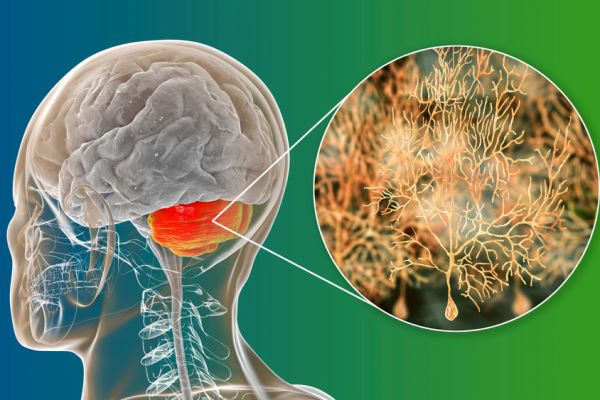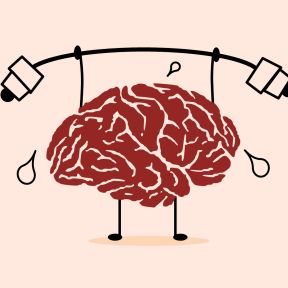
Neuroplasticity
Neuroplasticity is the brain’s capacity to continue growing and evolving in response to life experiences. Plasticity is the capacity to be shaped, molded, or altered; neuroplasticity, then, is the ability for the brain to adapt or change over time, by creating new neurons and building new networks.
Historically, scientists believed that the brain stopped growing after childhood. But current research shows that the brain is able to continue growing and changing throughout the lifespan, refining its architecture or shifting functions to different regions of the brain.
The importance of neuroplasticity can’t be overstated: It means that it is possible to change dysfunctional patterns of thinking and behaving and to develop new mindsets, new memories, new skills, and new abilities.
Contents

Neuroplasticity encompasses how nerve cells adapt to circumstances—to respond to stimulation by generating new tendrils of connection to other nerve cells, called synapses, and to respond to deprivation and excess stress by weakening connections.
Neuroplasticity underlies the capacity for learning and memory, and it enables mental and behavioral flexibility. Research has firmly established that the brain is a dynamic organ and can change its design throughout life, responding to experience by reorganizing connections—via so-called “wiring” and “rewiring.” Scientists sometimes refer to the process of neuroplasticity as structural remodeling of the brain.
The brain changes most rapidly in childhood, but it’s now clear that the brain continues to develop throughout life. At any time, day-to-day behaviors can have measurable effects on brain structure and function. For example, a well-known study of British taxi drivers found that memorizing the city streets led to changes in the memory center, the hippocampus, and that those who had driven for longer had more expansion in the hippocampus. These changes in middle age highlight the role of neuroplasticity in learning across the lifespan.
Neurogenesis refers to the creation of new brain cells. Scientists long believed that the brain was not capable of producing new neurons, but modern research has revealed that certain regions of the brain, particularly the hippocampus, are capable of generating new cells throughout adult life.
One of the core concepts of neuroplasticity is known as Hebb’s rule: Neurons that fire together, wire together. In other words, the more that neurons communicate with one another, the stronger their connection will be. Similarly, connections that are not used will be lost.
New research suggests how neurogenesis plays a role in that process. As new cells are created, they build robust connections and have a higher likelihood of “winning out” in the battle to connect than older neurons, demonstrating the interplay between neurogenesis and neuroplasticity.

The ability of the brain to change and grow in response to experience enables people to bounce back from setbacks and adversity—to be resilient. They can bend without breaking.
The disruption of neuroplasticity by severe stress or adversity is characteristic of such conditions as depression and post-traumatic stress disorder. There is quite literally a loss of synapses. In those disorders, people get stuck in neural ruts of negative thinking/feeling/behaving or fear-based memories.
All psychotherapy is intended to foster resilience; the goal is to help people examine distressing feelings and experience and redirect them into more functional patterns, restoring cognitive and behavioral flexibility.
Aging is thought to decrease resilience through the cumulative detrimental effects of stress on neuroplasticity. The dynamic capacity of the brain to rewire itself in response to experience makes a case for lifelong stimulation as a way to maintain optimal brain health and to decrease the risk of dementia and degenerative disorders like Alzheimer’s disease.
People who have endured traumatic brain injuries have revealed the remarkable capacity for the brain to change and heal. The brain can move critical functions from a damaged area to a healthy one, or recreate connections that were lost.
One powerful example is former U.S. Representative Gabrielle Giffords, who was tragically shot in the head in 2011. She could not speak following the incident, but in the years since, music therapy helped Giffords to recover the ability to express herself.
After a limb is amputated or lost, most people continue to feel sensations in that body part. They often feel pain, but they may also experience sensations such as being touched or wearing clothing. This fascinating phenomenon is due to neurons that continue to transmit sensory information about the body part that they previously controlled.
Due to brain plasticity, the amount of neural "real estate" devoted to a particular body part can increase or decrease. Sometimes this happens quickly; for example, losing a middle finger can lead neighboring fingers to soon take over that territory. Other times this happens slowly or not at all, as in the case of people whose phantom limbs persist for decades.
The existence of neuroplasticity creates the foundation for mental health treatment through rigorous and intensive cognitive training. It means that shifting beliefs and habits through talk therapy can create biological changes that can help overcome conditions such as anxiety and depression. Brain imaging studies have borne this out, demonstrating that therapy can produce lasting changes in brain structure and connectivity.
Humans are creatures of habits, and we often develop routines from which we seldom deviate. But a few practices can help foster cognitive flexibility and overall adaptability: 1. Do something you know how to do, but do it differently. For example, take a different routine home from work, or cook something that you wouldn’t usually make. 2. Pursue new challenges and experiences, such as learning a new language or picking up painting or martial arts. 3. Meet new people, because a diversity of viewpoints can expand your thinking.

It is not only possible but necessary to use your mind and your body to reshape your brain. Enhancing synaptic connectivity through any of a variety of means actively promotes cognitive and mental health and blunts the impact of negative stimuli.
One of the most powerful ways to open up “windows of plasticity” in the brain is physical activity. Aerobic exercise helps the brain as much as the heart. In the brain, it stimulates the release of the substance known as brain-derived neurotropic factor (BDNF), which sets in motion the growth of new synaptic connections and bolsters the strength of signals transmitted from neuron to neuron.
BDNF helps pave networks of neuronal correction, promoting mental and behavioral flexibility. Stress is known to weaken expression of BDNF. Studies show that walking an hour a day, 5 out of 7 days a week, increases brain matter in the hippocampus, the seat of learning and memory.
All drugs known to alleviate depression stimulate the release of BDNF and other biological molecules that promote nerve cell growth and neuroplasticity. Many other nonpharmacologic methods have been shown to directly stimulate and maintain neuroplasticity. They include:
- Engaging in positive social interactions
- Participating in novel activities
- Engaging in play
- Being in enriched and stimulating environments
- Practicing and repeating positive activities—even mentally rehearsing them
- Engaging in mental training strategies such as mindfulness meditation
- Developing a sense of purpose in life.
The proteins responsible for regulating the processes of cell birth and cell death in the brain are known as neurotrophic factors, one of which is BDNF. When a neuron obtains an adequate amount of these proteins during development, it survives, while neurons that do not receive enough die. As these proteins are not abundant, neurons must compete for them during development and even into old age.
Consequently, decreased levels of BDNF have been associated with neurodegenerative disorders such as Parkinson’s disease, Alzheimer’s disease, multiple sclerosis, and Huntington’s disease. Higher levels are associated with improved cognitive functioning, mental health, and memory.
Rigorous exercise can be especially beneficial for neurogenesis and memory. One study found that three weeks of high-intensity cycling and five weeks of aerobic exercise improved cognitive functioning and increased levels of BDNF. Another found that BDNF levels increased with aerobic exercise and that this corresponded with a small increase in hippocampal volume as well.
Sometimes it’s difficult to develop new habits, thought patterns, or social skills—even if we want to. But a few concrete steps can help rewire responses that seem to be entrenched in the brain. First, label the response you want to change. Second, identify the new response that you want to develop. Third, explore what factors might reduce the unwanted response and boost the desired response. Lastly, repeatedly practice the new response so that it becomes ingrained.














